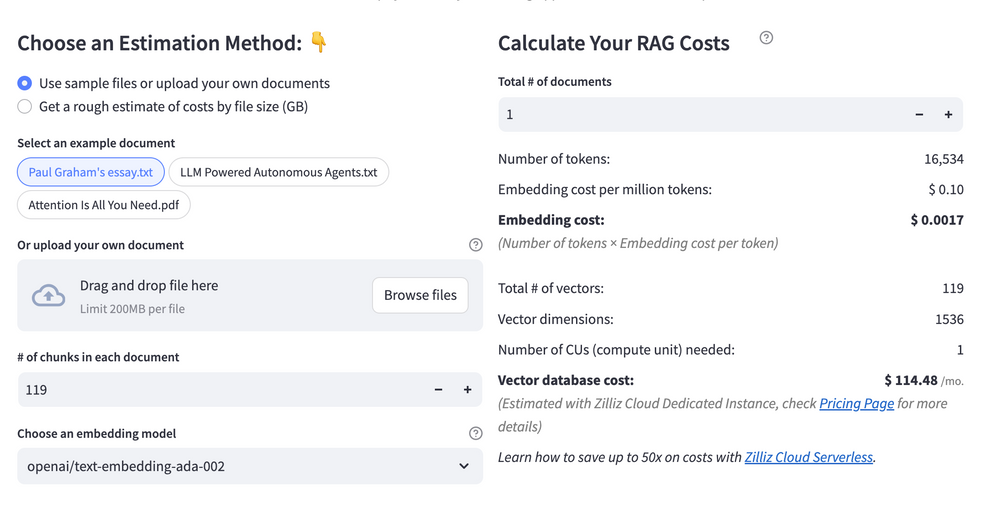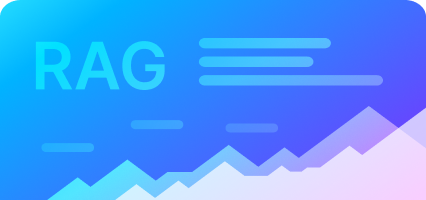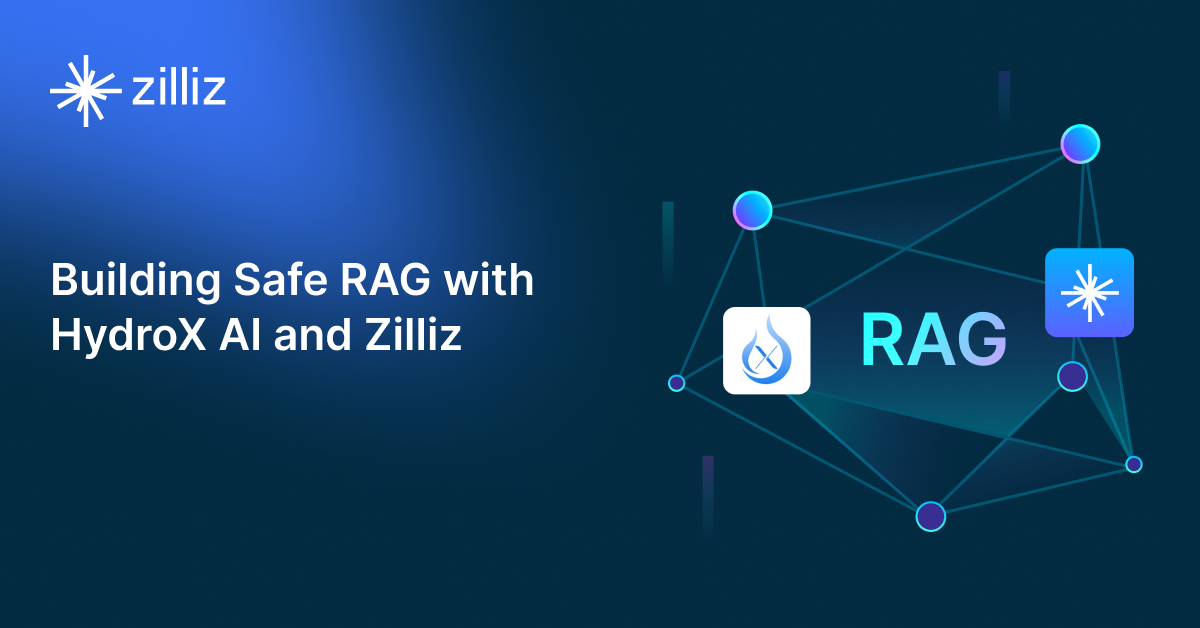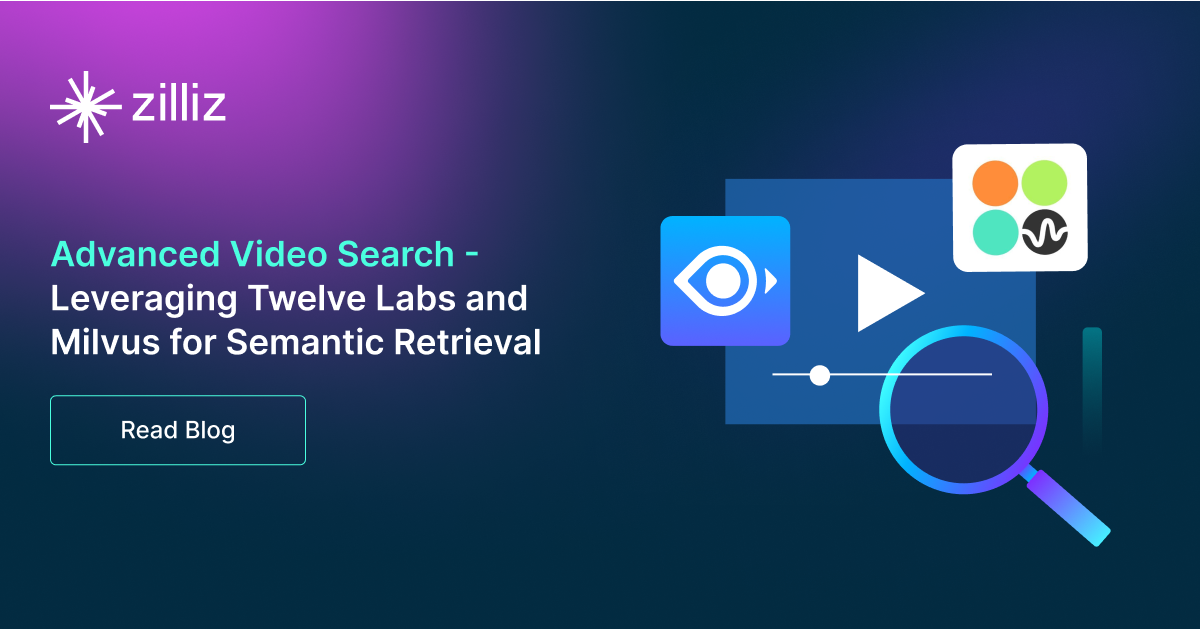Build RAG Chatbot with Llamaindex, OpenSearch, OpenAI GPT-o1, and HuggingFace all-MiniLM-L12-v1
Introduction to RAG
Retrieval-Augmented Generation (RAG) is a game-changer for GenAI applications, especially in conversational AI. It combines the power of pre-trained large language models (LLMs) like OpenAI’s GPT with external knowledge sources stored in vector databases such as Milvus and Zilliz Cloud, allowing for more accurate, contextually relevant, and up-to-date response generation. A RAG pipeline usually consists of four basic components: a vector database, an embedding model, an LLM, and a framework.
Key Components We'll Use for This RAG Chatbot
This tutorial shows you how to build a simple RAG chatbot in Python using the following components:
- Llamaindex: a data framework that connects large language models (LLMs) with various data sources, enabling efficient retrieval-augmented generation (RAG). It helps structure, index, and query private or external data, optimizing LLM applications for search, chatbots, and analytics.
- OpenSearch: An open-source search and analytics suite derived from Elasticsearch. It offers robust full-text search and real-time analytics, with vector search available as an add-on for similarity-based queries, extending its capabilities to handle high-dimensional data. Since it is just a vector search add-on rather than a purpose-built vector database, it lacks scalability and availability and many other advanced features required by enterprise-level applications. Therefore, if you prefer a much more scalable solution or hate to manage your own infrastructure, we recommend using Zilliz Cloud, which is a fully managed vector database service built on the open-source Milvus and offers a free tier supporting up to 1 million vectors.)
- OpenAI GPT-1: A foundational transformer-based language model designed for natural language understanding and generation. Strengths include coherent text generation, contextual comprehension, and adaptability to diverse NLP tasks. Ideal for text completion, basic conversational agents, and early-stage language research, serving as a precursor to more advanced models like GPT-3 and GPT-4.
- HuggingFace all-MiniLM-L12-v1: A compact sentence embedding model designed to convert text into dense vector representations for semantic understanding. It balances speed and efficiency with strong performance in tasks like semantic search, text clustering, and retrieval-augmented generation. Ideal for applications requiring low-latency inference or resource-constrained environments while maintaining robust semantic analysis capabilities.
By the end of this tutorial, you’ll have a functional chatbot capable of answering questions based on a custom knowledge base.
Note: Since we may use proprietary models in our tutorials, make sure you have the required API key beforehand.
Step 1: Install and Set Up Llamaindex
pip install llama-index
Step 2: Install and Set Up OpenAI GPT-o1
%pip install llama-index llama-index-llms-openai
from llama_index.llms.openai import OpenAI
llm = OpenAI(
model="o1",
# api_key="some key", # uses OPENAI_API_KEY env var by default
)
Step 3: Install and Set Up HuggingFace all-MiniLM-L12-v1
%pip install llama-index-embeddings-huggingface
from llama_index.embeddings.huggingface import HuggingFaceEmbedding
embed_model = HuggingFaceEmbedding(model_name="BAAI/bge-small-en-v1.5")
Step 4: Install and Set Up OpenSearch
%pip install llama-index-vector-stores-opensearch
from os import getenv
from llama_index.core import SimpleDirectoryReader
from llama_index.vector_stores.opensearch import (
OpensearchVectorStore,
OpensearchVectorClient,
)
from llama_index.core import VectorStoreIndex, StorageContext
# http endpoint for your cluster (opensearch required for vector index usage)
endpoint = getenv("OPENSEARCH_ENDPOINT", "http://localhost:9200")
# index to demonstrate the VectorStore impl
idx = getenv("OPENSEARCH_INDEX", "gpt-index-demo")
# OpensearchVectorClient stores text in this field by default
text_field = "content"
# OpensearchVectorClient stores embeddings in this field by default
embedding_field = "embedding"
# OpensearchVectorClient encapsulates logic for a
# single opensearch index with vector search enabled
client = OpensearchVectorClient(
endpoint, idx, 1536, embedding_field=embedding_field, text_field=text_field
)
# initialize vector store
vector_store = OpensearchVectorStore(client)
Step 5: Build a RAG Chatbot
Now that you’ve set up all components, let’s start to build a simple chatbot. We’ll use the Milvus introduction doc as a private knowledge base. You can replace it with your own dataset to customize your RAG chatbot.
import requests
from llama_index.core import SimpleDirectoryReader
# load documents
url = 'https://raw.githubusercontent.com/milvus-io/milvus-docs/refs/heads/v2.5.x/site/en/about/overview.md'
example_file = 'example_file.md' # You can replace it with your own file paths.
response = requests.get(url)
with open(example_file, 'wb') as f:
f.write(response.content)
documents = SimpleDirectoryReader(
input_files=[example_file]
).load_data()
print("Document ID:", documents[0].doc_id)
storage_context = StorageContext.from_defaults(vector_store=vector_store)
index = VectorStoreIndex.from_documents(
documents, storage_context=storage_context, embed_model=embed_model
)
query_engine = index.as_query_engine(llm=llm)
res = query_engine.query("What is Milvus?") # You can replace it with your own question.
print(res)
Example output
Milvus is a high-performance, highly scalable vector database designed to operate efficiently across various environments, from personal laptops to large-scale distributed systems. It is available as both open-source software and a cloud service. Milvus excels in managing unstructured data by converting it into numerical vectors through embeddings, which facilitates fast and scalable searches and analytics. The database supports a wide range of data types and offers robust data modeling capabilities, allowing users to organize their data effectively. Additionally, Milvus provides multiple deployment options, including a lightweight version for quick prototyping and a distributed version for handling massive data scales.
Optimization Tips
As you build your RAG system, optimization is key to ensuring peak performance and efficiency. While setting up the components is an essential first step, fine-tuning each one will help you create a solution that works even better and scales seamlessly. In this section, we’ll share some practical tips for optimizing all these components, giving you the edge to build smarter, faster, and more responsive RAG applications.
LlamaIndex optimization tips
To optimize LlamaIndex for a Retrieval-Augmented Generation (RAG) setup, structure your data efficiently using hierarchical indices like tree-based or keyword-table indices for faster retrieval. Use embeddings that align with your use case to improve search relevance. Fine-tune chunk sizes to balance context length and retrieval precision. Enable caching for frequently accessed queries to enhance performance. Optimize metadata filtering to reduce unnecessary search space and improve speed. If using vector databases, ensure indexing strategies align with your query patterns. Implement async processing to handle large-scale document ingestion efficiently. Regularly monitor query performance and adjust indexing parameters as needed for optimal results.
OpenSearch optimization tips
To optimize OpenSearch in a Retrieval-Augmented Generation (RAG) setup, fine-tune indexing by enabling efficient mappings and reducing unnecessary stored fields. Use HNSW for vector search to speed up similarity queries while balancing recall and latency with appropriate ef_search and ef_construction values. Leverage shard and replica settings to distribute load effectively, and enable caching for frequent queries. Optimize text-based retrieval with BM25 tuning and custom analyzers for better relevance. Regularly monitor cluster health, index size, and query performance using OpenSearch Dashboards and adjust configurations accordingly.
OpenAI GPT-01 optimization tips
To optimize OpenAI GPT-01 in a RAG setup, fine-tune prompts to include explicit instructions and structured context (e.g., “Answer using: [retrieved text]”). Limit response length with max_tokens to reduce verbosity and cost. Use a lower temperature (0.2–0.5) for factual accuracy. Preprocess retrieved documents to remove irrelevant content, ensuring inputs fit token limits. Cache frequent queries to minimize API calls. Experiment with chunking strategies for context injection and prioritize critical information at the prompt’s start or end. Monitor latency and adjust batch sizes for throughput efficiency.
HuggingFace all-MiniLM-L12-v1 optimization tips
To optimize the all-MiniLM-L12-v1 model in a RAG setup: preprocess input data by cleaning and normalizing text (lowercasing, removing special characters) to improve embedding quality. Use batch inference for embedding generation to maximize GPU utilization. Fine-tune the model on domain-specific data via contrastive learning to enhance retrieval relevance. Reduce vector dimensionality via PCA if storage or latency is critical. Cache frequently accessed embeddings to minimize recomputation. Quantize the model with Hugging Face’s transformers library for faster inference with minimal accuracy loss. Regularly benchmark performance against your retrieval metrics (e.g., recall@k) to validate optimizations.
By implementing these tips across your components, you'll be able to enhance the performance and functionality of your RAG system, ensuring it’s optimized for both speed and accuracy. Keep testing, iterating, and refining your setup to stay ahead in the ever-evolving world of AI development.
RAG Cost Calculator: A Free Tool to Calculate Your Cost in Seconds
Estimating the cost of a Retrieval-Augmented Generation (RAG) pipeline involves analyzing expenses across vector storage, compute resources, and API usage. Key cost drivers include vector database queries, embedding generation, and LLM inference.
RAG Cost Calculator is a free tool that quickly estimates the cost of building a RAG pipeline, including chunking, embedding, vector storage/search, and LLM generation. It also helps you identify cost-saving opportunities and achieve up to 10x cost reduction on vector databases with the serverless option.
 Calculate your RAG cost
Calculate your RAG cost
What Have You Learned?
Congratulations on completing this comprehensive tutorial on building a Retrieval-Augmented Generation (RAG) system! You've journeyed through integrating a robust framework like LlamaIndex with the power of a vector database such as OpenSearch, enhancing your applications with state-of-the-art capabilities. By leveraging OpenAI's GPT-3 and the all-new HuggingFace MiniLM embedding model, you have unlocked a treasure chest of possibilities for natural language understanding and content generation. How exciting is it to know that you've equipped yourself with the tools to not just retrieve accurate information but also generate meaningful insights that can aid in decision-making and creativity?
Throughout our exploration, we’ve also discussed some optimization tips to get the best performance out of your RAG system. Plus, how about that free RAG cost calculator we introduced? This handy tool can help you evaluate your deployment's expenditure, ensuring you stay efficient and cost-effective. Now that you’ve got these skills under your belt, the horizon is bursting with opportunity! So, dive in and start building, optimizing, and innovating your very own RAG applications. The world is waiting for your unique contributions—let's bring your ideas to life! Your journey just begins here, and we can't wait to see what you create!
Further Resources
🌟 In addition to this RAG tutorial, unleash your full potential with these incredible resources to level up your RAG skills.
- How to Build a Multimodal RAG | Documentation
- How to Enhance the Performance of Your RAG Pipeline
- Graph RAG with Milvus | Documentation
- How to Evaluate RAG Applications - Zilliz Learn
- Generative AI Resource Hub | Zilliz
We'd Love to Hear What You Think!
We’d love to hear your thoughts! 🌟 Leave your questions or comments below or join our vibrant Milvus Discord community to share your experiences, ask questions, or connect with thousands of AI enthusiasts. Your journey matters to us!
If you like this tutorial, show your support by giving our Milvus GitHub repo a star ⭐—it means the world to us and inspires us to keep creating! 💖
- Introduction to RAG
- Key Components We'll Use for This RAG Chatbot
- Step 1: Install and Set Up Llamaindex
- Step 2: Install and Set Up OpenAI GPT-o1
- Step 3: Install and Set Up HuggingFace all-MiniLM-L12-v1
- Step 4: Install and Set Up OpenSearch
- Step 5: Build a RAG Chatbot
- Optimization Tips
- RAG Cost Calculator: A Free Tool to Calculate Your Cost in Seconds
- What Have You Learned?
- Further Resources
- We'd Love to Hear What You Think!
Content
Vector Database at Scale
Zilliz Cloud is a fully-managed vector database built for scale, perfect for your RAG apps.
Try Zilliz Cloud for Free


